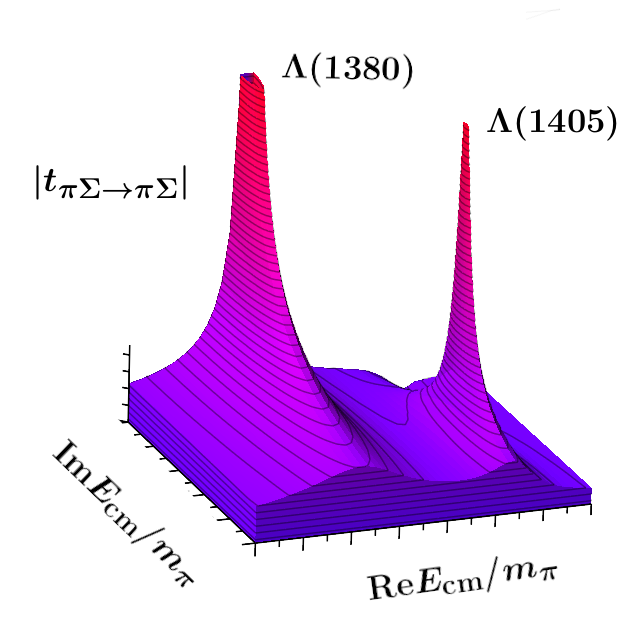The paper “Two-Pole Nature of the Λ(1405) Resonance from Lattice QCD” published by the Baryon Scattering (BaSc) collaboration was recently accepted as editors’ suggestion in the Physical Review Letters. The accompanying paper “Lattice QCD study of πΣ−KN scattering and the Λ(1405) resonance” was also accepted as editors’ suggestion in the Physical Review D.
The role of the fundamental theory of the strong nuclear force, Quantum Chromodynamics (QCD), in the formation of the observed hadron spectrum is an outstanding issue for the standard model of particle physics. The use of QCD to describe the binding of quarks and gluons into hadrons, such as protons and neutrons, is a low-energy phenomenon that requires a nonperturbative calculation that is difficult to apply. The nonperturbative technique we utilize is lattice QCD, where the theory is formulated on a spacetime lattice that allows statistical calculations on computers through Monte Carlo methods. States observed in experiments can be explained using scattering formalism, with theoretical methods necessary to compare calculations on Euclidean spacetime lattices to continuous Minkowski amplitudes. However, the study of nuclear systems using LQCD has been hampered because of a signal-to-noise problem that is heightened when extracting correlation functions. Recent advances in stochastic algorithms have allowed multi-hadron computations and the determination of meson-baryon scattering amplitudes, allowing studies of resonances and excited states in the hadron spectrum.

The work of the BaSc collaboration is the first lattice QCD study of a coupled-channel scattering system containing meson-baryon scattering amplitudes. This work is concerned with explaining the Lambda (1405) resonance which is a spin-1/2, negative parity state first identified experimentally in 1959. Explaining the nature of the Lambda (1405) has been a challenge to nuclear theorists as its relatively low mass and quantum numbers are difficult to explain in the three-quark model of low-energy QCD, leading to exotic explanations of the particle such as the meson-baryon molecular structure. The lattice study in this work utilizes quarks that are slightly heavier than physical and can identify two poles in the complex scattering amplitude with the resonance near the kaon-nucleon threshold and a virtual bound state as the lower pole below the pion-sigma threshold. These results provide a model-independent determination of the scattering amplitude and support the two-pole picture with qualitative results predicted by chiral symmetry and unitarity. This work also opens the use of lattice QCD toward other baryon resonances that can explain the nature of some of the shortest-lived particles observed in experimental physics.
Papers:

